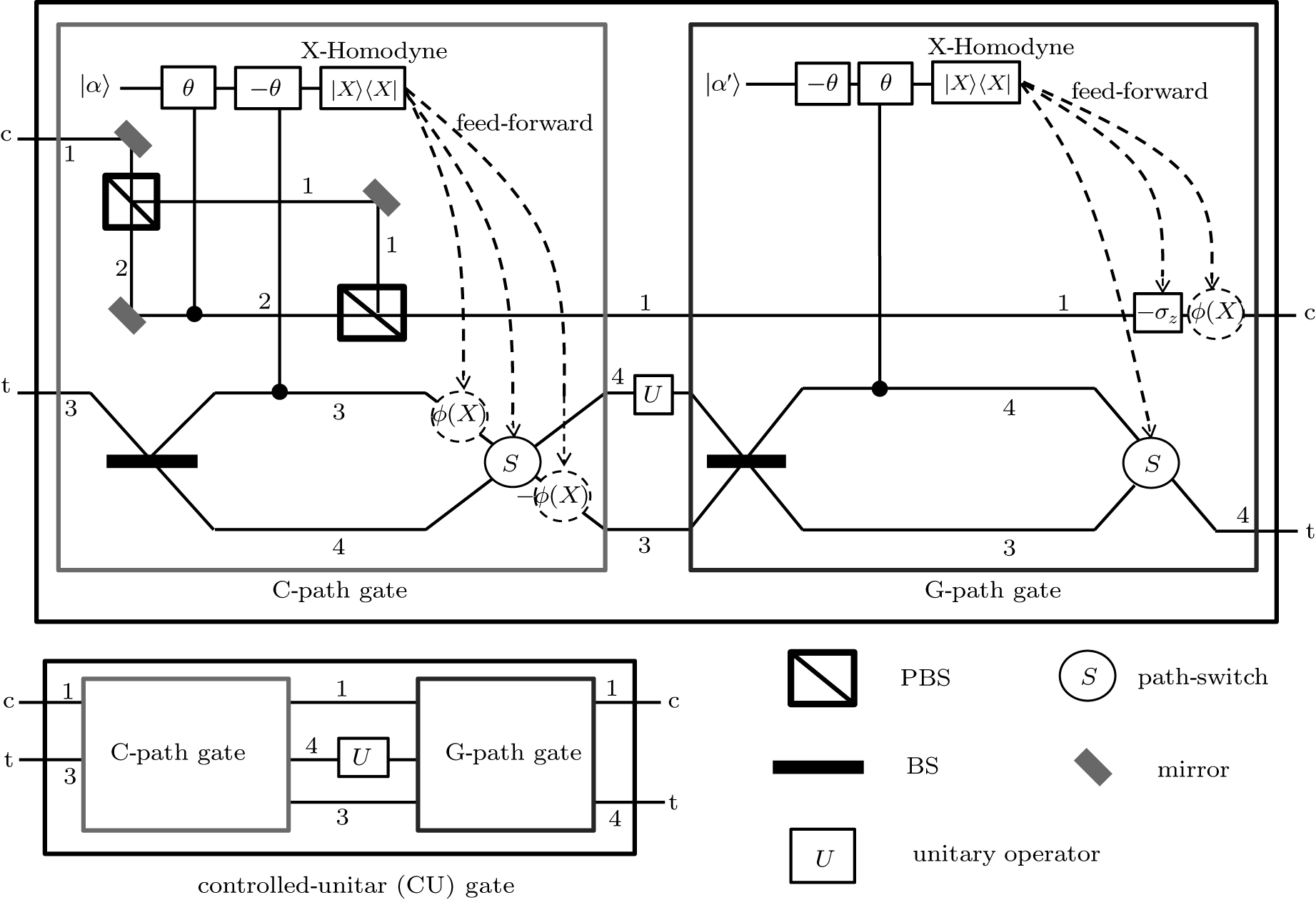Bidirectional quantum teleportation of unknown photons using path-polarization intra-particle hybrid entanglement and controlled-unitary gates via cross-Kerr nonlinearity

Bidirectional quantum teleportation of unknown photons using path-polarization intra-particle hybrid entanglement and controlled-unitary gates via cross-Kerr nonlinearity |
| The CU gate (black box) is comprised of the consecutive operation of a C-path gate (red box) and a G-path gate (blue box) using XKNLs, X-homodyne detectors, and feed-forwards. The CU gate is composed of three parts, the C-path gate, U operator, and G-path gate. First, in the C-path gate,[ 57 ] the two photons (c and t) in the input state induce the controlled phase shifts θ and − θ in the probe beam (coherent state: | α 〉) by the interaction of XKNLs. Then, we measure the coherent state with the X-homodyne detector, | X 〉 〈 X |, which can discriminate the coherent state | α 〉 from the other coherent states, | α e+i θ 〉 and | α e−i θ 〉 . According to the measurement outcome X of the X-homodyne detector, we determine whether or not to operate the phase shifters ( ϕ ( X ), − ϕ ( X )) and the path-switch S on the target photon t by feed-forward. After passing the C-path gate, the path of the target photon is split according to the polarization of the control photon. The target photon goes through path 3 (or 4) when the control photon is | H 〉 (or | V 〉). In the second step, the unitary operator U on path 4 is applied to the target photon. In the third step of the G-path gate, the XKNLs induce a phase shift − θ and θ in the probe beam in the coherent state | α ′〉 according to the photons c and t. To gather the target photon on the split-path, we finally apply the unitary operator − σZ and the phase shifter ϕ ( X ) to the control photon, and the path-switch S to the target photon via the feed-forward, depending on the measurement outcome of the X-homodyne detector on the probe beam. Consequently, the CU gate performs a controlled-unitary operation on the input state. |
 |